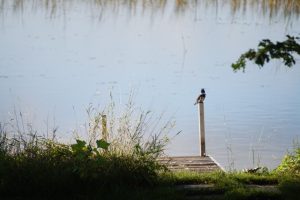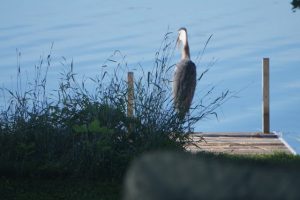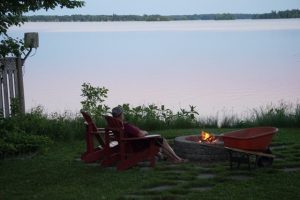Guest blogger Anne Gourlay-Langlois is a participant in Love Your Lake, a joint program from the Canadian Wildlife Federation and Watersheds Canada.
As promised, we received our personal survey code and instructions for accessing our individual shoreline property report by mail. This gave us plenty of time to make plans for any improvement that we wished to undertake that spring and summer.

Photo © Anne Gourlay-Langlois
Downloading the free PDF copy of our report was easy and the report was very comprehensive, providing both specific and general advice.
While we had thought we were fairly well informed on the topic, we were pleased with the results of the survey of our waterfront. It confirmed that we were on the right track. We were happy to see that our dock provided the minimum disruption to the aquatic environment and our “rip rap” shoreline protection was a good option for erosion protection.
Suggested Improvements
However, there was room for improvement. Based on an offered suggestion, we have let bushes, weeds and small trees take root in the bank to further protect us from erosion, anchor the wall and to provide a home for natural wildlife.
Our property is not large enough to create the suggested 10-meter natural buffer between water and lawn, but we were encouraged to do what we could to avoid having lawn down to the water’s edge and to increase the percentage of waterfront that is kept natural.
Working with the folks from the Natural Edge program they recommended planting small native bushes and leaving a natural “wild” buffer against the waterfront.
Unforeseen Benefits
A welcome surprise and true bonus from this initiative was that it has helped keep geese off our property. Apparently, Canada geese avoid coming ashore in locations where they cannot see what lies beyond the water’s edge.

Photo © Anne Gourlay-Langlois
We were further comforted by the report, finding that we were effectively managing storm water run-off from the house and that our landscaping options were well designed to allow for water to be absorbed into the soil thus avoiding adding possible pollutants to the lake. Further hints were further provided to help us improve our use of rain water. The addition of rain barrels and french-drains help water our gardens, save well-water and avoid erosion.
All in all, our “Love Your Lake” shoreline property report has provided us with much useful information and continues to be a reference that guides us as we develop and “un-develop” our property.

Photo © Anne Gourlay-Langlois
I highly recommend accessing your report if your lake has been surveyed or if not, getting your local lake association to engage in a Love Your Lake survey.

